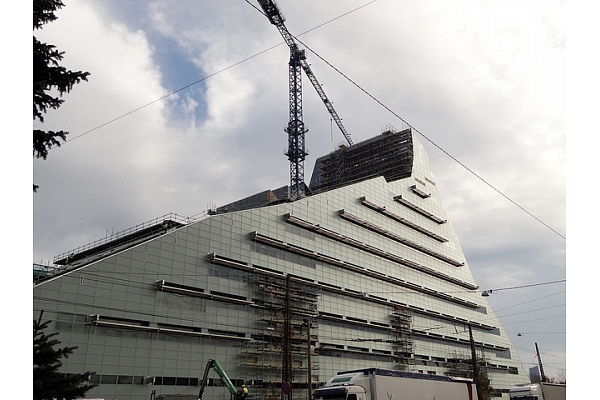Real estate market
Latvia: the worst of the market cycle is behind us
Even though the real estate market has not recovered from when the bubble burst, there have been some positive signs over the past year. Most of the talk about the real estate market is about stabilization, with stagnation mentioned less often.
A fly in the ointment is the uncertainty in the EU. Uncertainty about the development of the EU and a possible "second wave" of the crisis has made both investors and local potential buyers of housing wait and see. The mood and level of activity may also be affected by the situation in neighboring Russia. In the long term, the Latvian economy as well as the property market will be affected by the factors of low birth rate and high emigration.
Transactions
* In 2011, the total number of real estate transactions in Latvia increased (by 16,3% compared to a year earlier). The number of transactions involving housing also increased (by 18,3%).
* The total number of purchase transactions in Latvia in 2011 exceeded 40 000 (35 500 in 2010).
Real Estate Tax
* The real estate tax rate for land is 1,5 % of the cadastral value, it is the same for civil engineering works. The "residential" tax rate is 0,2% to 0,6%, depending on its valuation. From 2012, real estate tax will be assessed on garages and auxiliary buildings.
* The government is planning to gradually implement a reform of the tax, expanding the right of municipalities to determine real estate tax policies in their territory, to decide on its amount and what properties will be the assessed tax.
* The limits on increases of the real estate tax have been lifted. Previously, regulations stipulated that the tax rate on land and buildings used for commercial activity might not increase by more than 25% over the previous year.
Changes in immigration laws
* In 2010 changes in the Law on Immigration were passed that stimulated that foreigners could get residence permits based on purchases of real estate (in Riga and larger cities by investing not less than LVL 100 000 or EUR 142 300, outside Riga and the larger cities – LVL 50 000 or EUR 71 100).
* The changes in the law are working, however, discussions continue on whether this is exactly as was intended. They contributed to activity in housing segment in Jurmala and in the center of Riga.
* A total of 1 956 persons in 2011 used the opportunity to get temporary residence permits in return for investments in the Latvian economy by investing almost EUR 178 million (data from the Office of Citizenship and Migration Affairs – OCMA). 325 and 225 properties were bought in Riga and Jurmala respectively. EUR 163,3 million was invested in property in 2011.
Housing
* Due to the interest of non-residents, the offered price for new apartments in Jurmala has increased by around 20%. The construction of several new residential projects has begun, whose main target market is foreigners.
* The prices of standardized apartments in Riga’s residential complex market have remained virtually unchanged during the year.
In January, 2012, the price of a standardized apartment in Riga’s residential complexes was EUR 578 m2 (source: Latio).
* The rental market was active. The activity is related to the fact that part of the potential buyers cannot get bank loans, and that people do not want to undertake liabilities, giving preference to renting.
* Properties repossessed by the banks are gradually returning to the market. The real estate management companies founded by
the banks, taken together, have become an active and significant market participant. They participate in actions, some properties are still repossessed, some properties are already back in circulation.
* Some developers are starting or continuing residential housing projects. However, the volumes are still small. In the first three quarters of 2011, 1 754 apartments were built, which, compared to the first three quarters of 2010, is an increase of 15%.
Land
* On the whole, the market for land shows little activity, because financial institutions are reluctant to lend.
* On the other hand, the market for agricultural land is active, there is high demand from foreign purchases. Transactions are occurring with land being purchased for legal entities belonging to foreigners.
* The most expensive properties are in the Zemgale region, also in Kurzeme. There have been transactions for EUR 3 000 per hectare, but the lowest price was in Latgale – EUR 300 per hectare.
* Since new project development and construction activities have not revived, the price of land for commercial construction generally tended to fall in 2011. The exception was the center of Riga, where developers were interested in acquiring plots of land for building multi-residential dwellings.
Commercial property
* Increased activity and optimism was observed in the commercial property market at the beginning of 2011, but at the end of the year the enthusiasm started to fade because of the instability in the EU etc.
* In 2011 there was an increase in investment transactions. According to estimates by Colliers International the investment market could have increased by 25% and comprised around EUR 140 million.
* In the office space market, new office buildings are slowly filling up and in these office facilities there is a tendency for rents to rise. The vacancy rate in buildings that are in demand has decrease, as a result, the market is moving away from its lowest point.
* At the start of 2011, the average office space vacancy rate fluctuated between 20–30%. At the start of 2012, this indicator was around 15%. The greatest demand is for small office spaces (up to 200 m2) for a relatively low rent.
* The development of retail space is ensured by the strong retail trade chains, which continue to expand.
* The crisis has divided the market into well-functioning and no so well functioning shopping centers. In some centers, the vacancy rate is around 30%, but the average vacancy rate is low – around 6%.
* New tenants have shown up in shopping centers, several newcomers have shown an interest in the Baltic region. The international retailer H&M has announced its entry into the market.
* In 2011, as the economy revived, there was increased activity in the warehouse market and the average occupancy rate increased somewhat.
Useful Links
State Unified Computerised Land Register – www.zemesgramata.lv
State Land service– www.vzd.gov.lv; www.kadastrs.lv
Latvian Real Estate Association – www.lanida.lv
Photo: Pilseta24.lv





